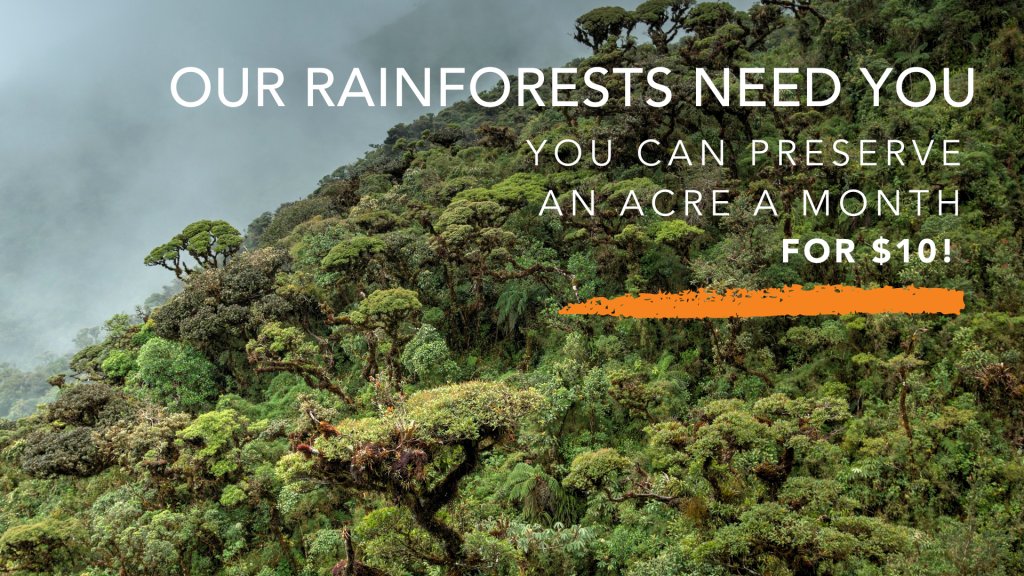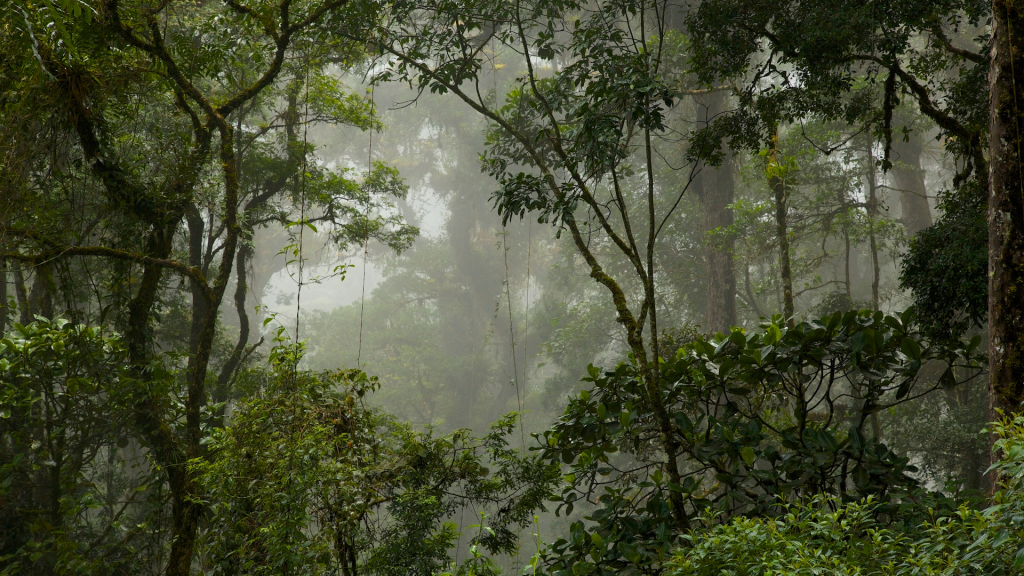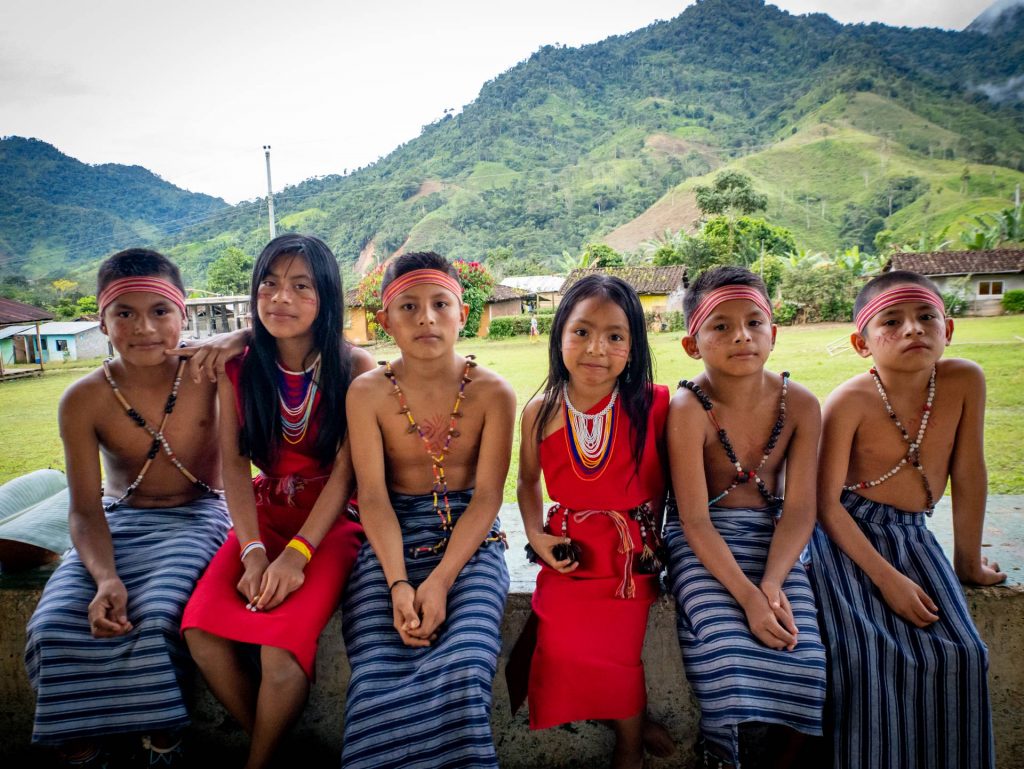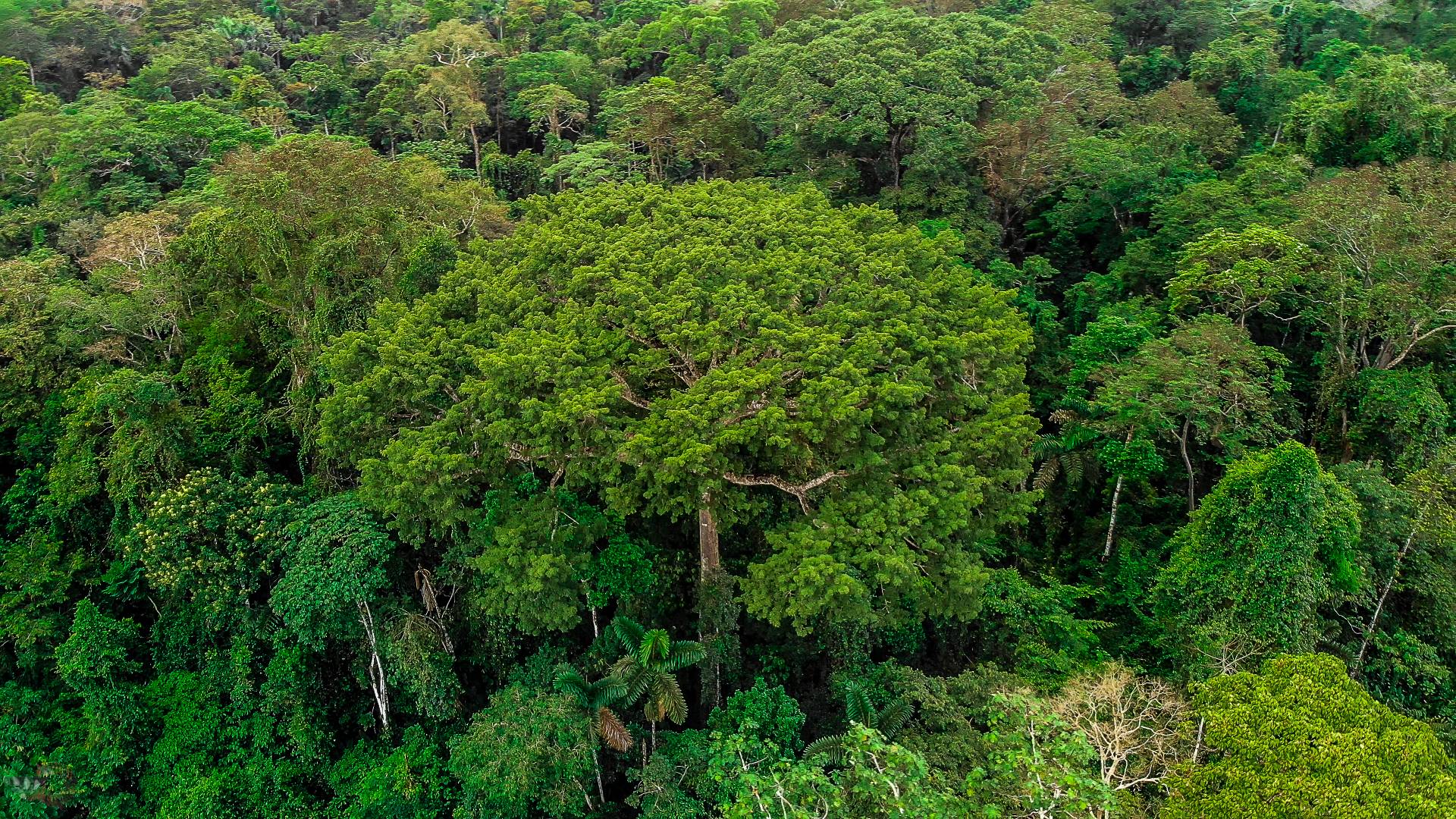The Incredible Rainforests of South America
06/16/2023

For World Rainforest Day, will you join our community of monthly donors who have pledged to protect South America’s rainforests year-round?
Over the course of a year, you’ll care for 12 acres – the size of 6 professional soccer fields!
Your gift…
- Defends wild places from deforestation, mining, and other unsustainable activities
- Connects irreplaceable habitat for threatened plants and animals
- Supports Indigenous and local communities in mapping, monitoring, and managing forests for the long-term
- Preserves the services these ecosystems provide to us all, including clean water and a stable climate
Not all rainforests are alike
Rainforests are ecosystems that experience a large amount of annual rainfall. They support an incredible number of plants, animals, and other life forms. Although they occur in different parts of the planet, tropical rainforests are found on and around the equator where sunlight is consistent throughout the year.
Nature and Culture International has projects and protected areas in rainforest ecosystems in many types of rainforest in South America. Our work occurs in the lowland Amazon rainforest, cloud forests in the Andes, and the Chocó forest of coastal Colombia and northern Ecuador.
Andean Cloud Forest: Highland rainforest

The extraordinary cloud forests of the Andes are a type of mid-altitude tropical rainforest. When humid air, transpired from the billions of trees in the lowland Amazon, moves west and up the mountain slopes of the Andes, some of it condenses and falls as rain. Some remain in the form of low clouds and mist, which condenses directly onto the foliage of cloud forest trees.
Cloud forests extend from about 3,000 feet in elevation up to about 8,000 feet, so temperatures tend to be cooler than in lowland rainforests. The terrain is often on steep slopes, with more open canopy, leading to more vegetation on the forest floor.
These higher-elevation forests are characterized by waterfalls and quick-moving, shallow rivers.
Cloud forest trees are often covered in plants called epiphytes, which capture much of the moisture found in cloud forests. Clouds and mist condense on the epiphytes’ leaves and pool at the bases of epiphytes (providing habitat for insects and some types of frogs). Trees here are generally shorter than in lowland rainforest, hence the cloud forest tree canopy is lower.
Nature and Culture is currently working with local communities and authorities in our North Andes Mosaic to protect highland forest in Peru which is essential for providing water resources to over two million people who live in the region.
Amazon: Tropical rainforest east of the Andes

The Amazon rainforest is the largest tropical forest on Earth, with the highest density of plant and animal species anywhere.
This region provides essential ecological services, stabilizing the world’s rainfall patterns and storing massive amounts of carbon that mitigate climate change.
This lowland rainforest is east of the Andes mountain range and spans eight South American countries. The Amazon is impressively large, more than double the size of the next two largest rainforests combined. It is also well known for its mighty Amazon River which is made up of 1,100 tributaries, including the Marañón River which is considered the source of the Amazon in Peru.
The province of Loreto, Peru, is facing the second-highest rate of deforestation in Peru. Nature and Culture is currently partnering with Indigenous communities and local authorities through sustainable livelihood projects in our Nanay-Tigre Mosaic.
Chóco: Coastal rainforest west of the Andes

On a strip of forest in western Colombia and Northwestern Ecuador, between the Pacific Ocean and the Andean mountain range is the Chocó forest.
It is a dense and diverse tropical rainforest that blends with adjoining mangrove forests, rocky cliffs, and coastal plains.
It is one of the world’s wettest rainforests and one of the most biologically rich areas in the world. Many species here cannot be found anywhere else on Earth, such as the golden poison frog (one of the three most poisonous vertebrates in the world).
Between two to three percent of this ecosystem is left, making it one of the most threatened and lesser-known forests in the world. With Nature and Culture International’s support, the Bajo Baudó protected area was established in 2018. This is the largest regional protected area ever created in Colombia. We are currently working in our Southern Chocó Mosaic to declare two new protected areas and establish sustainable management plans.
Why we protect rainforests
Although rainforests only cover 6 percent of our planet, an estimated 80 percent of terrestrial animals, plants, and fungi species worldwide live within them. Many species have not yet even been described by science. Rainforests contain a huge amount of biodiversity, which has major implications for our health, including improving mental well-being, preventing zoonotic diseases (diseases transmitted from animals to humans – e.g. West Nile virus, Lyme Disease, and some types of coronaviruses, among many others) from entering human populations, and providing fresh water, clean air, and vital medicines. Indigenous peoples have lived in and sustainably managed tropical rainforests for centuries, if not millennia. Many Indigenous communities are reliant upon the natural resources that the rainforest provides, particularly clean water.

By destroying rainforests, humans are exacerbating the climate crisis by releasing additional CO2 into the atmosphere. All rainforests have a huge volume of carbon stored in the vast amount of vegetation they house. There is so much carbon stored in these ecosystems that, if released, it would not be able to be restored by the 2050 global goal of reaching net-zero emissions; this is known as “Irrecoverable Carbon”.

For World Rainforest Day
and every day, it is important to support rainforest conservation and raise awareness of the threats they face.
We know we can do better for Earth. You can help by spreading awareness and supporting Nature and Culture’s nature-based solutions by pledging your $10 monthly gift today.


